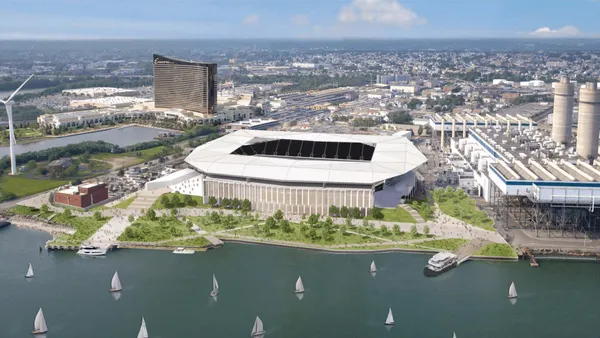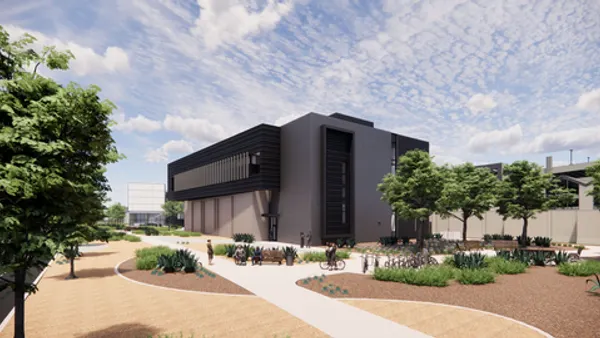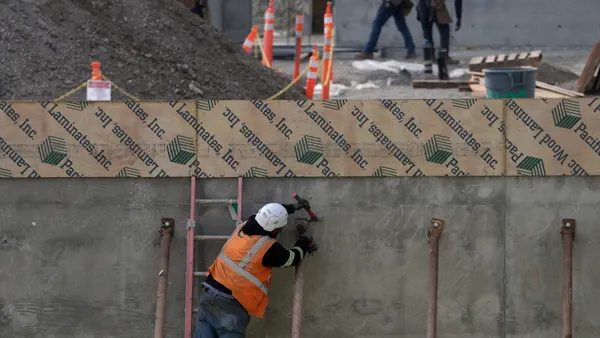When a hurricane or other disaster forces the closing of a jobsite, owners and contractors can be reasonably assured that, barring severe physical property damage, everyone will be back to work in short order.
However, the coronavirus pandemic has led contractors, material suppliers and other industry vendors into uncharted waters. Construction companies, for example, in Boston and other Massachusetts cities of Cambridge and Somerville and, to some degree, Pennsylvania, San Francisco, as well as Austin and Travis County, Texas, either are unsure about which projects must be closed or are looking at an indefinite moratorium.
And New York Gov. Andrew Cuomo Friday morning announced that construction is "nonessential" work, effectively shutting down most projects statewide.
Bill Weber, principal at Gaston Electrical in Norwood, Massachusetts, said the company was forced to shut down 90% of its projects, numbering between 35 and 40, in cities where construction has been banned. For the first time in four years, Weber said, the local electrical union’s membership is not fully employed. Rather, 60% to 70% are unemployed.
As contractors and subcontractors around the country are forced to leave their sites quickly — in Gaston’s case about two days — there are some things to keep in mind.
As a subcontractor, most of Gaston’s projects involve a general contractor who is typically ultimately responsible for making sure the project is shut down in a safe and responsible manner.
This means making sure that the physical space is secured, and those measures include:
- Strapping or otherwise securing material so that it does not fall or become displaced, potentially sustaining damage or causing harm to anyone visiting the site or, in some cases, remaining on the project.
- Locking away any tools and equipment that will not be moved.
- Making sure the entire project is secured by the appropriate locked fencing.
- Removing or locking away electronics like laptops or other devices.
- Covering or barricading all open excavation and trenches.
- Securing and locking all heavy equipment.
- Posting appropriate warning or caution signs.
- Installing a surveillance system and/or hiring security to patrol the site on a regular basis.
Most general contractors will also find themselves having to take extra precautions to keep the site as contagion-free as possible during this time.
“While many general contractors have emergency shutdown preparedness protocols in place,” said Greg Sizemore, vice president of health, safety, environment and workforce development at the Associated Builders and Contractors,” the coronavirus outbreak is an unprecedented circumstance that will necessitate additional steps, such as sanitation and increased worker health precautions.”
Developer MP Boston had to shut down the $1.3 billion mixed-use Winthrop Center, which had been under construction in Boston, and according to one of the company’s principals, Kathleen MacNeil, as part of securing the project site, and in addition to some of the general measures listed above, crews:
- Turned off generators that were providing temporary power and eliminated access to them via padlocked service doors.
- Removed tow-behind equipment at ground level.
- Shut down tower cranes, which were left to weathervane, while ensuring FAA safety lights remained operational.
At the time that the moratorium on construction work went into effect, MacNeil said, there were approximately 140 individuals working on the project daily. Although no one knows when work will resume in Boston, she said that MP still expects to complete the project on schedule in 2022.
Each subcontractor will also have its own duties to complete before wrapping up work.
Weber said that as part of Gaston’s shutdown, crews had to perform additional work to make sure the site was safe. This included:
- Making sure that exit signs and temporary lighting was operational so that security personnel will be safe as they walk the project.
- Installing temporary fans so that moisture doesn’t gather on newly installed electrical equipment.
Weber said that if the company had only had one or two projects there would have been time to pull all tools and equipment off of these sites, but given the volume, they elected to put most of the company’s property under lock and key at each job.
When work eventually resumes, Sizemore said, the reboot will also include more than just business as usual.
“How we plan and execute work has absolutely changed in response to the coronavirus,” he said. “There is a greater emphasis on hygiene and mental health than ever before, and many additional steps are being taken to ensure jobsites remain sanitary.”
Upon their return, contractors can also expect work to be carried out according to local health agency rules and the Centers for Disease Control and Prevention guidelines, which include a measure of social distancing for some time.
Some of the policies put in place in response to the pandemic could have positive long-term effects on construction as well. “Significant changes in our industry often occur in response to a disruption or disturbance to the plan — whatever that plan may be — and how our industry responds makes us better at what we do,” Sizemore said. “In this case, it will be in the increased focused on total human health.”










